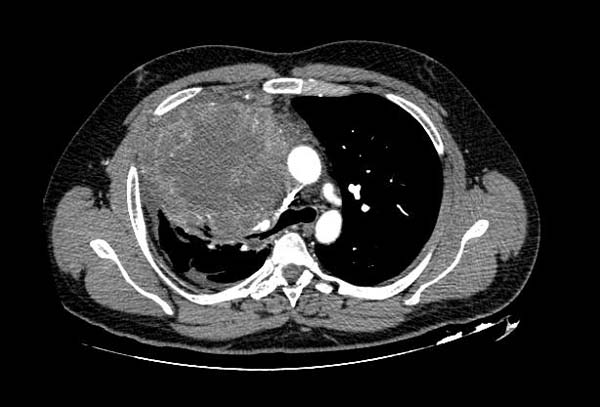Teratoma (patient information): Difference between revisions
m (Robot: Automated text replacement (-{{SIB}} +, -{{EH}} +, -{{EJ}} +, -{{Editor Help}} +, -{{Editor Join}} +)) |
No edit summary |
||
| Line 1: | Line 1: | ||
__NOTOC__ | |||
'''For the WikiDoc page for this topic, click [[Teratoma|here]]''' | '''For the WikiDoc page for this topic, click [[Teratoma|here]]''' | ||
{{Infobox_Disease | | {{Infobox_Disease | | ||
| Line 11: | Line 12: | ||
MeshID = D013724 | | MeshID = D013724 | | ||
}} | }} | ||
{{ | {{Teratoma}} | ||
'''Editor-in-Chief:''' [[C. Michael Gibson]], M.S.,M.D. [mailto:mgibson@perfuse.org] Phone:617-632-7753; '''Associate Editor-In-Chief:''' Jinhui Wu, M.D. | '''Editor-in-Chief:''' [[C. Michael Gibson]], M.S.,M.D. [mailto:mgibson@perfuse.org] Phone:617-632-7753; '''Associate Editor-In-Chief:''' Jinhui Wu, M.D. | ||
Revision as of 18:48, 10 September 2012
For the WikiDoc page for this topic, click here
| Teratoma (patient information) | |
| ICD-O: | 9080 |
|---|---|
| DiseasesDB | 3604 Template:DiseasesDB2 Template:DiseasesDB2 |
| MeSH | D013724 |
|
Teratoma Microchapters |
|
Diagnosis |
|---|
|
Treatment |
|
Case Studies |
|
Teratoma (patient information) On the Web |
|
American Roentgen Ray Society Images of Teratoma (patient information) |
|
Risk calculators and risk factors for Teratoma (patient information) |
Editor-in-Chief: C. Michael Gibson, M.S.,M.D. [1] Phone:617-632-7753; Associate Editor-In-Chief: Jinhui Wu, M.D.
Overview
Teratoma is a type of cancer made of cysts that contain one or more of the three main types of cells found in a developing embryo. Some teratomas are benign, some are cancerous. And benign teratomas have the risks to chnage into cancerous. Generally, teratomas locate in genital glands, mediastina and sacrococcygeal region. Symptoms vary depending on the locations. Usual symptoms include abdominal pain, shortness of breath, cough, chest pain and abnormal bleeding from the vagina. Alpha fetoprotein (AFP) levels and some imaging tests may be helpful for the diagnosis. Treatments include surgery and chemotherapy.
What are the symptoms of the condition?
Signs and symptoms vary depending on the location. Early teratoma does not have any symptoms. As the tumor grows larger, people may notice one or more of the following symptoms:
- Chest pain
- Cough
- Shortness of breath
- Abdominal pain
- Lump
- Abnormal bleeding from the vagina
- Fatigue, weight loss
- Limited ability to tolerate exercise
Other health problems may also cause these symptoms. Only a doctor can tell for sure. A person with any of these symptoms should tell the doctor so that the problems can be diagnosed and treated as early as possible.
What causes teratoma?
It is often located in the chest area. Most malignant teratomas can spread throughout the body, and have spread by the time of diagnosis.
A number of other cancers are often associated with these tumors, including:
- Acute myelogenous leukemia (AML)
- Embryonal rhabdomyosarcoma
- Malignant histiocytosis
- Myelodysplasia (MDS)
- Small cell undifferentiated carcinoma
Who is at the highest risk?
Teratoma occurs most often in young men in their 20s - 30s
When to seek urgent medical care?
Call your health care provider if symptoms of teratoma develop. If you experience either of the following symptoms, seeking urgent medical care as soon as possible:
- Shortness of breath
- Severe abdominal pain
- A large amount of bleeding from the vagina
Treatment options
The health care provider will perform a physical exam, which may reveal signs of congestive heart failure and increased pressure in the chest area.
The following tests help diagnose the tumor:
- Blood tests to check beta-HCG and alpha fetoprotein (AFP) levels: For patients with teratoma, the two levela may be much higher than normal.
- Computed tomograph scans of the chest, abdomen, and pelvis: CT scans are often used to diagnose teratoma. It can confirm the location of the cancer and show the organs nearby, as well as lymph nodes and distant organs where the cancer might have spread. These are helpful for determining the stage of the cancer and in determining whether surgery is a good treatment option.
-
CT shows Mediastinal Teratoma
- Mediastinoscopy, laparoscopes with biopsy
Patients with teratoma have many treatment options. The selection depends on the stage of the tumor. The options are surgery and chemotherapy, or a combination of these methods. Before treatment starts, ask your health care team about possible side effects and how treatment may change your normal activities. Because cancer treatments often damage healthy cells and tissues, side effects are common. Side effect may not be the same for each person, and they may change from one treatment session to the next.
- Surgery: If the teratoma has not spread and the patient's general health is available, the surgery may be recommened.
- Chemotherapy: The treatment is to use drugs to stop the growth of cancer cells either by killing the cells or by stopping them from dividing. Usual used drugs are cisplatin, etoposide, and bleomycin.
Diseases with similar symptoms
Different locational teratomas show different symptoms and signs.
Teratoma in genital gland needs to differ from
Mediastinal teratoma needs to differ from
Sacrococcygeal teratoma needs to differ from
Where to find medical care for teratoma?
Directions to Hospitals Treating teratoma
Prevention of teratoma
Because the cause is not clear, the preventive measure is unknown.
What to expect (Outook/Prognosis)?
The prognosis of teratoma depends on the following:
- Whether or not the tumor can be removed by surgery.
- The size and location of the tumor
- The patient’s general health
Possible Complications
The cancer can spread throughout the body and there may be complications of surgery or related to chemotherapy.
